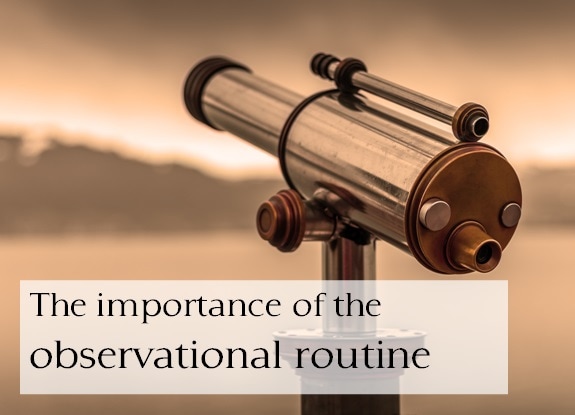|
As a seasoned natural family planning (NFP) user, I must admit that at times I get sloppy. I know my body and my fertility signs very well, and I often know what I'm going to see on a given day of my cycle. Because of this, it's tempting to take shortcuts in my observational routine; that is, the way that I observe my body's signs of fertility. But having a solid observational routine is the fundamental skill that ensures effectiveness of natural family planning, so no matter how comfortable you are with the method, it's important to stay on top of this! Think about it; your observations are what sets NFP apart from the Rhythm Method. The Rhythm Method is a way of predicting your fertile window based on the length of your past cycles, but it does you no good if you have irregular cycles, are breastfeeding, perimenopause, or post-Pill. If you aren't diligently watching your body's symptoms of fertility, then your guesswork leaves you vulnerable to the occasional early or delayed ovulation. So how do you prevent this? Here are the hallmarks of a good observation routine: 1. Consistency. You are aware of your vaginal sensation throughout the day, and you are checking for cervical mucus on your toilet paper before and after each time you use the bathroom. This is key, as sometimes you'll only observe mucus once or twice a day, so it's easily missed if you aren't consistent! If you have trouble remembering, try creative ideas like leaving your chart in the bathroom or putting a bright sticker on your underwear! Eventually it becomes such a habit that you'll make your observations almost without thinking. 2. Uniformity
Do it the same way every time. If you're using external observation with a tissue (as outlined in the SymptoPro method), always use external observation. Don't occasionally switch with internal observation or looking at your underwear instead. Make sure you take your temperature at the same time and in the same way every day. Pick a method and stick with it! This keeps your observations from getting confused. 3. Write it in your chart! I've learned this the hard way! So many times I've forgotten to bring my chart on a trip, or I've stowed it somewhere for safekeeping away from toddler fingers. Instead of writing down my observations at the end of the day, I convince myself that I'll get to it tomorrow. Well one missed day turns into two, and before I know it I have three or four days worth of observations to write down at once and with horror I realize that I don't remember. Another thing I've done is neglected to write down any possible chart disturbances. This includes things like drinking alcohol, sleeping in, getting sick, changing time zones, and experiencing extra stress. These events can cause changes in your chart. If I don't note what was going on that day, I may look back at my chart a few weeks or months later and wonder why my cycle turned out so crazy! Your chart can tell you SO MUCH about your body if you let it. Just write it down! Following this simple advice can make the difference between sloppy, confusing charts and charts that beautifully and accurately depict your individual hormonal cycle. A good chart has many uses, including family planning, health monitoring, and even relationship building!
0 Comments
Your comment will be posted after it is approved.
Leave a Reply. |
For updates, new articles, upcoming events, and information about fertility, healthy relationships, and natural family planning, sign up for the newsletter below:
Categories
All
|
Wellspring Family Wellness
[email protected]
2024
This site and associated social media may contain affiliate links from which I earn a small commission
[email protected]
2024
This site and associated social media may contain affiliate links from which I earn a small commission

